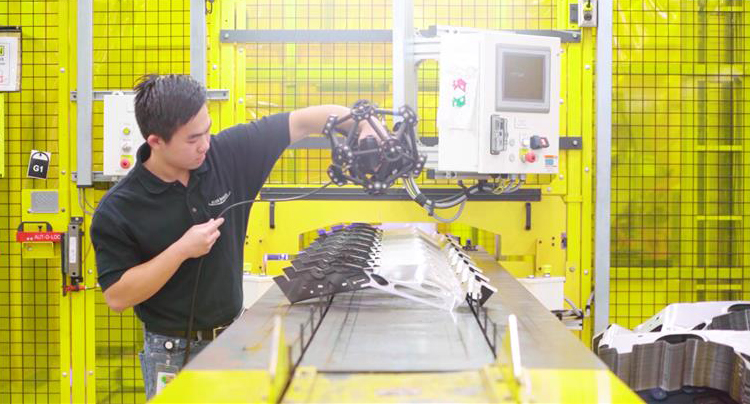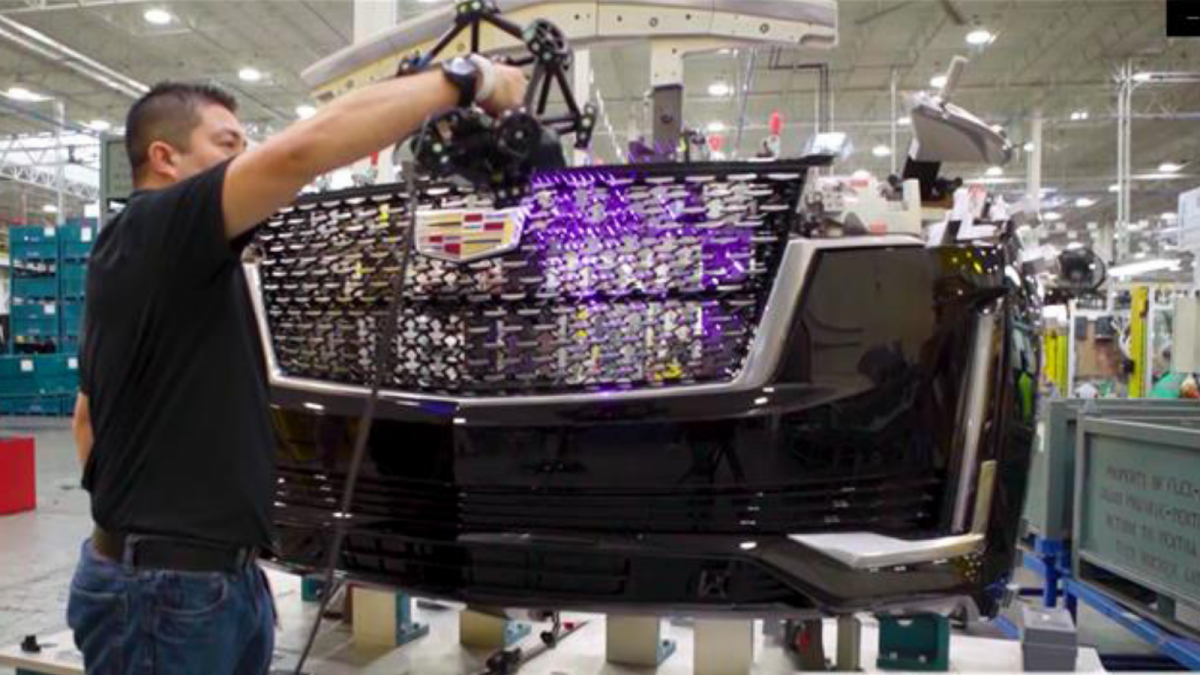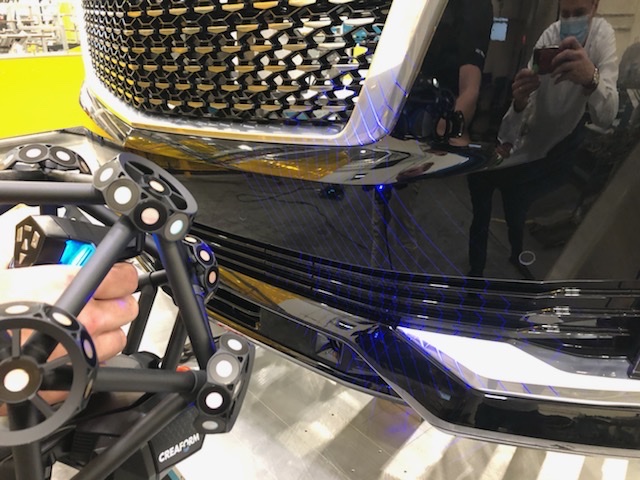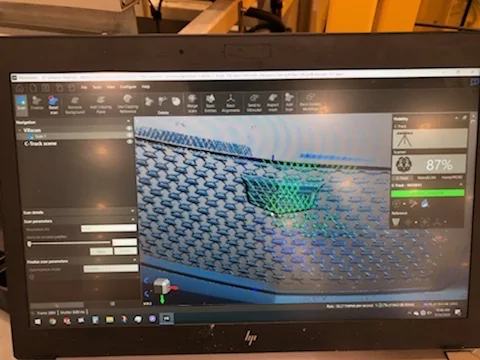Exit this form
Are you sure you want to quit this form?

Regardless of economic downturns or upswings, part and sub-assembly suppliers in the auto industry are under tremendous pressure from original equipment manufacturers (OEMs) to improve product quality and performance—all while reducing lead times and curtailing costs. This can take a huge chunk out margins.
Implementing just-in-time and automated manufacturing workflows have definitely helped suppliers address the need for efficiency and streamlined operations. However, many Tier 1, Tier 2 and even Tier 3 suppliers are looking towards other solutions to address OEM quality and cost requirements as well as their own labor and productivity issues.
Mitigating inspection bottlenecks and inefficiencies
Any auto sector supplier knows that having a robust quality management system, which incorporates both quality assurance upstream and quality control downstream of the production process is critical. Quality issues from any type of component or sub-assembly can lead to performance problems, expensive recalls, hazards to drivers, and potential litigation. In the past, suppliers in the automotive industry relied on conventional CMMs in the lab to conduct part inspections. While CMMs did offer a very high level of accuracy and confidence in the data, they required metrologists to work the equipment and conduct the inspections.
The problem with CMMs is that due to the fact that only experts could complete inspection tasks, production bottlenecks inevitably occurred. For one, there are only so many quality control checks that any worker could do in one day—regardless of qualifications or efficiency. Today’s tight labor market and a generation on the cusp of retirement exacerbate OEM suppliers’ challenges in recruiting and keeping experienced metrologists.
Secondly, CMMs could only be operated in labs and not in production environments, due to vibrations, humidity levels, dust and more. Furthermore, due to costs, the number of CMMs were limited to any given manufacturing plant. Ultimately, production throughput and quality were greatly affected.
In order to maintain a competitive edge, auto OEMs are designing increasingly sophisticated vehicles. From organic form factors to the electrification of cars, which requires a whole new manufacturing mindset, OEMs are pushing the design envelop—with parts and sub-assemblies becoming more complex than ever before.
Complexity therefore adds an extra layer of challenges for quality assurance and quality control teams. Traditional tools were limited in how they were able to capture critical measurements for parts with curved shapes or shiny, black, transparent or reflective surfaces, for example. The problem is further compounded when inspections need to be conducted on an entire system with intricate parts and sub-parts. What’s more: as consolidation continues within the auto industry, suppliers are tasked with having to develop skills to design and produce more types of parts for different OEMs with varying specifications, complicating quality assurance and quality control methods even more.
Quality monitoring for defects and traceability can therefore be a real headache for auto suppliers without the appropriate 3D measurement technologies and workflows.
It can be quite the balancing act for OEM suppliers. On the one side, OEMs demand innovation from their partners to ensure product differentiation. On the other side, OEMs expect suppliers to cut annual costs—sometimes as much as 3 to 5%. As a result, suppliers risk to see their financial performance erode.
To remain competitive while reducing margin and performance pressure, suppliers go beyond “simply” pay-for-performance incentives and gainsharing plans to motivate workers to be more productive. They must also turn to innovative solutions to gain efficiency through technology and rethink production line workflows to boost operational performance.
|
As an integral part of a comprehensive quality management system, metrology-grade 3D scanners and optical CMMs, like Creaform’s HandySCAN 3D and MetraSCAN 3D, play vital roles for OEM suppliers from both a quality and operational standpoint. Many OEM suppliers, whether they are Tier 1, Tier 2 or Tier 3, are opting for portable 3D scanning solutions as a complement to their traditional CMM or other inspection devices. The reasons? These technologies afford optimal levels of accuracy, reliability and repeatability for auto industry applications. They also generate fast 3D measurement results and are often incredibly easy to use for operators of any skill level. Other OEM suppliers are experiencing tremendous productivity gains with automated quality control solutions, such as Creaform’s R-SeriesTM. The R-Series is a complete, industrial 3D measurement cell that can also be integrated into factories for at-line inspections. Let’s take a look at the advantages of 3D scanning technologies for OEM suppliers in more detail. |
 |
Suppliers need to rely on robust and proven 3D scanning technologies to meet the demands of today’s discerning OEM customers. Here are how portable dimensional measurement solutions, like the HandySCAN 3D scanner and MetraSCAN optical CMM scanner are stepping up to the plate for part and sub-assembly suppliers in the automotive industry.
Flex-N-Gate is a renowned OEM supplier that currently uses Creaform’s 3D scanning technologies. Flex-N-Gate supplies large, stamped metal and welded components, assemblies, and plastic parts for car manufacturers.The company currently has MetraSCAN 3D optical CMM scanners in 22 plants and also recently integrated the HandySCAN 3D. The two solutions are used for quality assurance, quality control and reverse engineering applications. Aaron Boyer, Global Director – CAD/CAE at Flex-N-Gate explains that, with these scanners, “what used to take days in the past now just takes hours or even minutes.”He also mentions that most of his OEM customers are now requiring that the company use 3D scanning technology to resolve quality issues. “As we grow, we see 3D measurement technology as the standard moving forward. This is the type of tech we want to see in all of our 68 facilities.”

